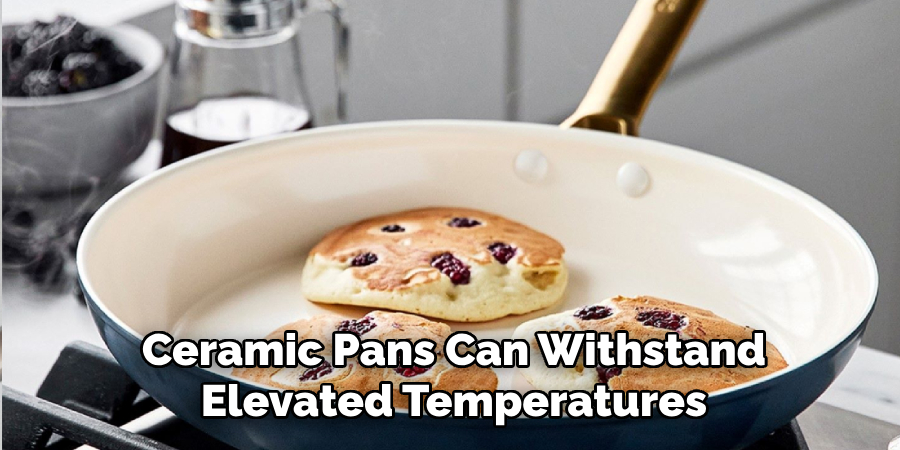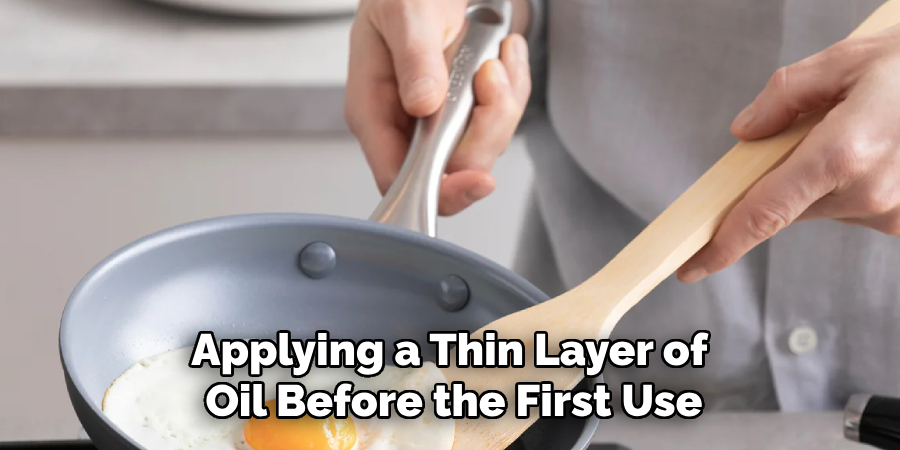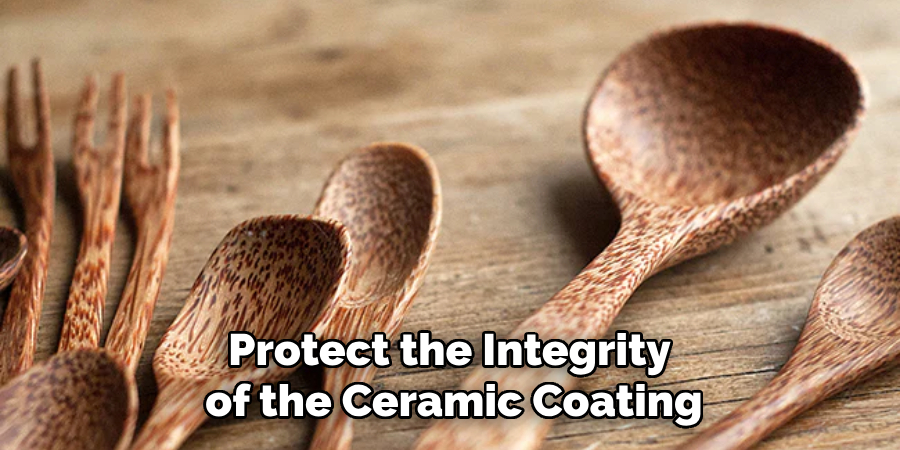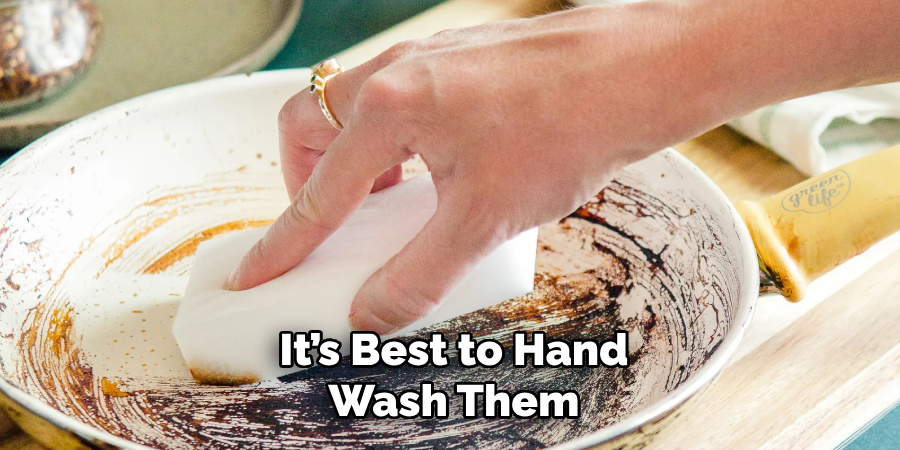Ceramic cookware has gained popularity for its non-stick surface and eco-friendly materials. Unlike traditional non-stick pans coated with chemicals like PTFE or PFOA, ceramic pans are made from natural materials, making them a healthier and more sustainable option. Proper care is crucial because, although ceramic pans are durable, they require special attention to maintain their non-stick surface and prolong their lifespan. Improper use can lead to chipping, scratching, or loss of non-stick properties. This guide will provide a comprehensive overview of how to care for ceramic pans, offering insights on cleaning, maintaining, and storing them to ensure they remain functional and last for years. Adopting the right practices in handling these pans will preserve their quality and enhance your cooking experience by maintaining safety and performance standards.

Understanding Ceramic Coating
What is Ceramic Coating?
The ceramic coating on these pans is crafted from inorganic materials that are free from harmful chemicals. This nature-friendly layer offers a smooth, non-stick surface, facilitating effortless food release and minimizing the necessity for oil or butter during cooking. This feature not only promotes healthier meals but also eases the task of cleaning.
How it Works
Ceramic is inherently nonstick due to its smooth, glass-like surface. This allows it to perform well and initially maintain its nonstick capabilities. However, this coating can deteriorate over time if subjected to high heat, metal utensils, or abrasive cleaning agents. While ceramic pans are robust, these factors can lead to the degradation of their nonstick qualities, affecting their performance and longevity.
Difference Between Ceramic and Traditional Non-Stick

Unlike traditional non-stick pans, which often contain PTFE or PFOA, ceramic pans can withstand elevated temperatures without releasing harmful fumes. They are also heat resistant up to much higher temperatures, providing an advantage in cooking versatility. However, they can be more vulnerable to damage induced by abrasive materials or overheating. Gaining insight into the characteristics of this coating will assist in directing the appropriate care for the pan, ensuring it remains in optimal condition for extended use.
How to Care for Ceramic Pans: Seasoning Your Ceramic Pan
Step 1: Wash Before First Use
When you first purchase a ceramic pan, it’s important to wash it gently with warm, soapy water. This initial cleaning helps to remove any manufacturing residues that might be present. After washing, ensure the pan is thoroughly dried before proceeding to the next step.
Step 2: Seasoning Your Pan
While most ceramic pans do not require seasoning in the same way as cast iron skillets, some experts recommend applying a thin layer of oil before the first use. This technique helps create an additional non-stick barrier that can enhance the pan’s performance.

How to Season:
- Heat the pan over medium heat.
- Add a tablespoon of vegetable oil or another high-smoke point oil.
- Gently swirl the oil around to evenly coat the entire surface of the pan.
- Allow the pan to cool completely.
- Once cooled, use a soft cloth to wipe away any excess oil.
Why Seasoning Helps:
Seasoning helps maintain the smooth surface of the ceramic pan, adding an extra layer of protection against food sticking. This is particularly beneficial when cooking at high heat or with sticky ingredients, as it assists in preserving the pan’s non-stick qualities and prolonging its useful life.
How to Care for Ceramic Pans: Cooking with Ceramic Pans
Use Medium to Low Heat

Ceramic pans excel at retaining heat, eliminating the need for high-temperature cooking. Utilizing high heat can deteriorate the non-stick surface over time, so it’s recommended to stick to medium or low heat settings, which adequately accommodate most cooking tasks. Preheating the pan on medium heat for a minute or two before adding food ensures even cooking without risking damage to the surface.
Avoid Cooking Sprays
Cooking sprays can accumulate on the ceramic pan’s surface, leading to a sticky residue that is challenging to clean. To maintain the non-stick properties, use a small amount of oil or butter instead. This not only preserves the ceramic coating but also enhances the quality of cooked meals.
Use the Right Utensils
Use wooden, silicone, or plastic utensils to protect the integrity of the ceramic coating. Metal utensils are notorious for causing chips and scratches that compromise the pan’s non-stick features. Even during flipping or stirring, avoid scraping the surface with sharp objects.

Avoid Extreme Temperature Changes
Subjecting a hot ceramic pan to cold water or cold surfaces can cause thermal shock, potentially leading to cracks or warping of the ceramic coating. Allow the pan to cool down naturally before washing or submerging it in water to prevent thermal damage.
Cooking Techniques to Avoid
Certain high-temperature cooking methods, such as searing at very high temperatures or deep frying, can reduce the lifespan of the non-stick coating on ceramic pans. For optimal results, focus on sautéing, stir-frying, and other gentle cooking approaches. These methods preserve the pan’s coating and maximize its cooking efficiency and longevity.
Cleaning Ceramic Pans
Step 1: Let the Pan Cool
Always let the pan cool before cleaning to prevent warping or damaging the ceramic coating. Never run cold water over a hot ceramic pan, as this can cause thermal shock and potentially damage the surface.
Step 2: Hand Wash Only
While some ceramic pans are labeled as dishwasher-safe, it’s best to hand wash them to protect the non-stick coating. Use warm water, a mild dish detergent, and a soft sponge or cloth to clean the pan. Harsh abrasives or scouring pads can scratch the surface. If food is stuck to the pan, fill it with warm, soapy water and let it soak for 15-20 minutes before gently scrubbing it away. This method will help to loosen any debris without damaging the pan.

Step 3: Remove Stubborn Stains
Create a paste using baking soda and water for burnt-on food or stubborn stains. Apply the paste to the stained area and gently scrub with a soft sponge. This gentle abrasive action will help break down the stains without compromising the non-stick surface. Rinse the pan thoroughly afterward. Avoid using harsh cleaners such as bleach or oven cleaners, as these can wear down the ceramic coating and reduce the lifespan of your pan.
Step 4: Dry Immediately
After washing, dry the pan immediately with a soft towel to prevent water spots and ensure the pan remains in good condition. Leaving the pan wet can lead to mineral deposits or streaks. By drying the pan promptly, you will help preserve its aesthetic appearance and maintain the integrity of the ceramic coat, ensuring it remains functional and visually appealing for years to come.
Storing Your Ceramic Pans
Proper storage of your ceramic pans is essential for maintaining their non-stick surface and overall longevity. Avoid stacking pans directly on top of each other, as this can lead to scratches or damage. Use a cloth, paper towel, or specifically designed pan protector between each pan if you need to stack them in a cabinet.
These protective layers prevent friction and preserve the pans’ surfaces. Alternatively, consider hanging your ceramic pans, ensuring they stay separate from other cookware. If hanging is not an option, store them side by side on a shelf, allowing a small space between each pan. This method minimizes contact and reduces the risk of chipping or other damage, keeping them in pristine condition when needed. By taking these precautions, you’ll extend the life and performance of your ceramic pans significantly.
Extending the Life of Your Ceramic Pan
Re-season the Pan Occasionally
Over time, the non-stick properties of ceramic pans can diminish. To restore their non-stick surface, season the pan with a light coat of oil after every few uses. Start by heating the pan gently, then apply a thin layer of high-smoke point oil, such as vegetable or canola oil. Allow the pan to cool completely before wiping away any excess oil with a soft cloth. This simple re-seasoning process helps maintain the pan’s efficacy and prolongs its lifespan.
Avoid High-Temperature Cooking
As mentioned earlier, cooking at very high temperatures can degrade the ceramic coating. For optimal results, stick to medium heat or lower to protect your pan. Gentle cooking not only preserves the non-stick surface but also enhances the flavor and texture of your meals. Keeping an eye on temperature ensures the longevity of your pan while maintaining quality cooking results.
Inspect for Damage
Regularly inspect your pan for signs of damage, such as scratches, chips, or peeling. Addressing these issues early can prevent further deterioration. If the non-stick surface starts to degrade significantly, it may be time to replace the pan to avoid any health concerns from flaking material. A timely replacement ensures safety while cooking and helps maintain the quality of your food.
Don’t Use Harsh Chemicals or Cleaners
To preserve the ceramic non-stick coating, use mild cleaning agents and avoid harsh chemicals like bleach, ammonia, or industrial cleaners that can strip the non-stick surface. Gentle dish detergents and a soft sponge will help maintain the pan’s integrity and functionality over the years. By following these guidelines, you can ensure your ceramic pan remains a staple in your kitchen for many delicious meals to come.
Conclusion
In summary, understanding how to care for ceramic pans is crucial to maintaining their high-performance attributes and extending their lifespan. Key tips include cooking with low to medium heat to preserve the non-stick coating and cleaning with non-abrasive materials to avoid scratches. Proper storage methods, such as using protective layers or hanging, prevent physical damage and ensure aesthetic preservation.
By prioritizing these practices, you promote longevity and a healthier, non-toxic cooking experience, as ceramic pans offer a safer alternative to traditional non-stick cookware. Your dedication to proper care ultimately results in a reliable, eco-friendly kitchen tool that continues to serve delicious and healthy meals for years to come. Embrace and implement these guidelines, and your ceramic pans will consistently support your culinary endeavors while contributing to a sustainable lifestyle.
Specialization:
- Master of wheel-throwing, hand-building, and advanced glazing techniques
- Focus on creating both functional pottery and decorative art pieces
Recognition:
- Celebrated by collectors and art enthusiasts for creating one-of-a-kind pieces that blend artistry with functionality
- Participates in local and national exhibitions, earning accolades for his innovative designs and craftsmanship
Passion:
- Deeply committed to exploring and pushing the boundaries of ceramic artistry
- Continuously experiments with new materials, firing techniques, and artistic concepts to evolve his craft
Personal Philosophy:
- Believes in the transformative power of art, aiming to evoke emotions and connections through his ceramic creations
- Advocates for sustainability in ceramics, using eco-friendly materials and practices whenever possible


